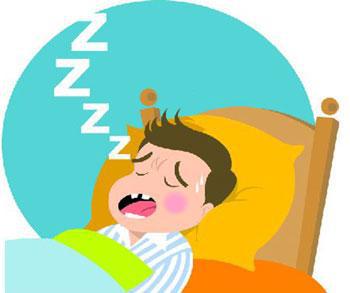
In children with a common condition that causes them to periodically stop breathing during sleep, areas of the brain involved with thinking and problem-solving appear to be smaller than in children who sleep normally, a study finds.
Researchers can't say the brain changes actually cause problems for children at home or school, but they do say the condition, known as obstructive sleep apnea (OSA), has been tied to behavior and cognitive problems.
"It really does seem that there is a change in the brain or that the brain is affected," said study author Paul Macey, who is director of technology and innovation at the University of California, Los Angeles School of Nursing.
Macey and colleagues write in Scientific Reports that up to 5 percent of all children are affected by OSA. The condition causes the child's airway to become blocked, which ultimately causes the brain to go without oxygen for short periods of time and may wake the child up.
Previous studies on lab animals and adults with OSA have shown changes in the brain due to nerve cells dying, they add.
For the new study, the researchers used magnetic resonance imaging to analyze the volume of children's gray matter, which is the outermost layer of the brain that allows for higher levels of functioning like problem solving.
They compared brain scans from 16 children with OSA and 200 children without the condition. All the youngsters were between 7 and 11 years old.
Overall, children with OSA had decreases in gray matter volume in areas of the brain important for controlling cognition and mood, compared to the other children.
Macey, who is also affiliated with the UCLA Brain Research Institute, said it's unclear how closely changes in the brain are connected to behavior, cognition and other issues.
"We know these two things are happening, but we’re not sure how much the reduced gray matter tracks with poor scores," he told Reuters Health.
The researchers also can't say exactly why OSA is tied to reduce gray matter volume among children. A lack of oxygen may kill off brain cells or it may stop the brain from properly developing, for example.
Macey's team wants to see whether treating the condition helps children get back on track with their healthy peers.
"If we did that we would know better how people recover from it or not," he said.
Dr. Eliot Katz, of Harvard Medical School and Boston Children’s Hospital, said previous research shows treating OSA by removing tonsils and adenoids improves children's school performance, behavior and sleep-related issues. Evidence is mixed on whether it improves cognition.
Katz, who wasn't involved with the new study, said the previous research on problems faced by children with OSA - like behavior and cognition - is fitting nicely with the brain imaging studies.
"This is really the first large, really well controlled study that has found decrements in gray matter in children with obstructive sleep apnea," he told Reuters Health.
He said parents should discuss symptoms of OSA with children's healthcare providers. Those symptoms include chronic snoring and gaps in breathing while they sleep.
"Sleep complaints are often not addressed in well child care visits," he said, or in training programs for pediatricians.
He advises parents to "take a brief phone video of the breathing pattern that’s concerning to them and show it to their pediatrician."
Macey said daytime tiredness and mood issues can also be symptoms of OSA. Children who are overweight and obese are at higher risk for the condition.
Source: Reuters
http://www.reuters.com/article/us-health-pediatrics-sleep-brain-idUSKBN16O2RW
 FR
FR EN
EN AR
AR








